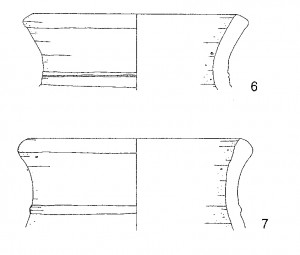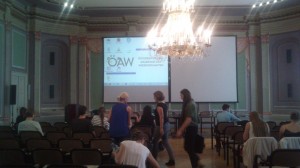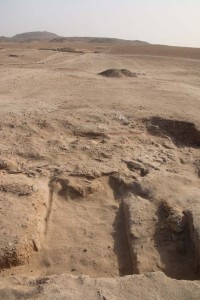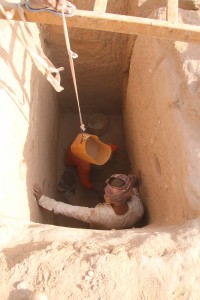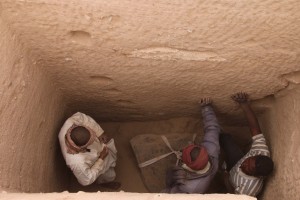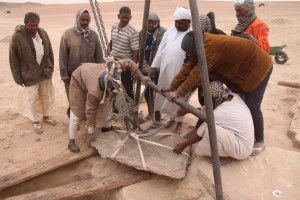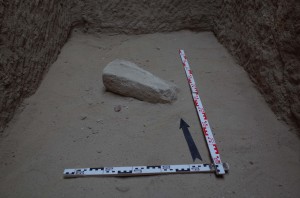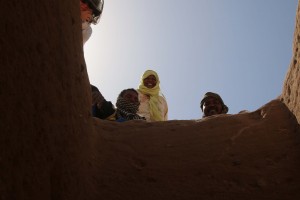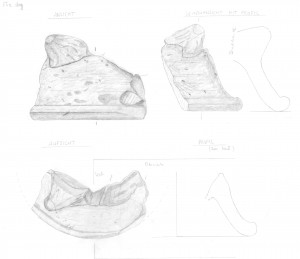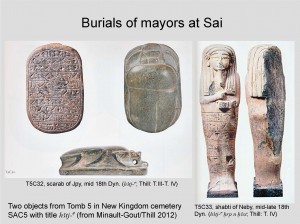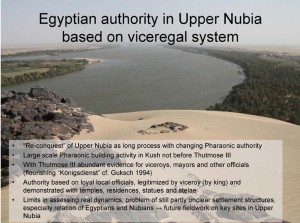We are already well into week 3 here at Elephantine. Reinforcement from Munich reached us – Giulia D’Ercole and Mona Elazab joined us yesterday. Giulia is concentrating on the petrographic assessment of the Nubian fabrics in comparison to Sai Island. Mona is assisting Meg Gundlach in the object registration while Eva Hemauer and Oliver Frank Stephan are still busy drawing ceramic vessels.
Two groups of vessels are of special interest besides the Nubian wares. First, the intriguing fire dogs – with a recent find from today, we are now up to 4 pieces directly associated with house 55. Compared to Sai Island, this is of course an almost ridiculous small amount. However, the total number of fire dogs from all early-mid 18th dynasty levels at Elephantine only comes up to 9! So actually the amount of fire dogs found in our building is quite significant within the local context. And since excavation of house 55 continues, there might even be more fire dogs waiting for us!
The second group of vessels are the so called “fish dishes” which kept us busy both at Sai and here at Elephantine in the past years. One of my first ideas was that the preference for Nile silt “fish dishes” on Sai Island compared to Marl clay version indicate that the “real” Egyptian Marl B/E trays were frequently reproduced in Nubia – and for this local material (Nile silt) was used. However, already last year things got more complicated: from site SAV1 West, a large number of Marl “fish dishes” were unearthed falling into exactly the same types as known at Elephantine, currently being studied for house 55.
Today, I just a very nice fragment of a Nile “fish dish” on my desk – coming from house 55 and closely resembling the Sai pieces – in ware, technique, shape and decorative pattern. Checking the pottery database, it surprised me a bit that from 19 “fish dishes” documented so far in house 55, 6 are made in Nile clay. For all 18th Dynasty layers and a total of 33 “fish dishes” only 9 were made in Nile clay. Thus, if one checks the proportions between Nile and Marl “fish dishes” not just on Elephantine, but takes the specific example of house 55 it becomes clear that the Nile versions were also quite frequent (31 %). The general preference for Marl clay is of course persistent for “fish dishes” at Egyptian sites (see e.g. https://blogs.ucl.ac.uk/museums/2014/03/21/pottery-project-guest-blog-the-enigmatic-fish-dishes-of-the-petrie-museum/).
All in all, the current study of the material from house 55 nicely illustrates the rich potential of a focused analysis of finds from one specific context, especially if these data are at a later stage compared to other contexts on the site-level and, if possible, even on a more regional scale like we are aiming for with our study.


